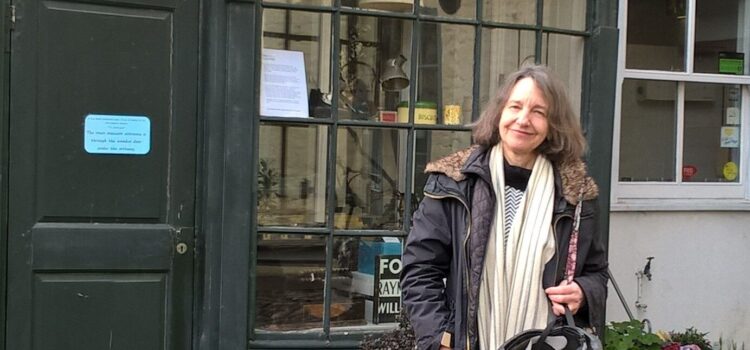Your bi-monthly update from our Chair, Lucy Walker
A couple of months ago I wrote about how exciting it’s going to be to revisit our collections with fresh eyes after the pandemic – how we can look again – or look for the first time – and tune in to new voices with new perspectives.
I’m going to continue that theme and begin to explore ideas around ‘thinking about things’.
The Museum of Cambridge – like all museums – is full of things. These things relate to the social history of the town – and the gown – and were once the loved belongings of families, individuals, craftspeople, organisations and businesses in the town and the surrounding villages in South Cambridgeshire and the Fens. They relate mainly to the period from about 1750 to 1950, and were collected from the mid-1930s.
When you visit the museum you will see a wonderful collection of cooking and washing equipment which came from people’s homes and also from some of the colleges; specialised tool kits which once belonged to local tradespeople, a wig in its powder room, dentistry kit which is barely recognisable today, local musical instruments, beautifully embroidered personal possessions, children’s toys – and in the Fen room, hand tools and objects which relate to life in a watery, quite isolated landscape. Things from the past which resonate with us today, evoking memories, shared experiences and half remembered ways of doing things. We don’t have to come from this area to understand or appreciate them – I think they speak to everyone – and the beauty is that they provide threads for us all to explore and find connections with, wherever we come from.
Thinking about the meaning of the word, I was interested to discover that Thing has changed its meaning over time. The early medieval word thing or ting (derived from Old Norse, Old German and Icelandic) was a governing assembly. In Anglo-Saxon England people gathered together at a Thingstead, to discuss and resolve matters of the day. The word Althing refers to the Icelandic parliament or assembly established in 930 AD – perhaps the longest serving governing assembly in the world. Today the word tyn is used for the three legislative bodies on the Isle of Man and is also the derivation of the English word husting.
Today the English word thing has lost its original meaning of a governing assembly of people, and is usually applied to an inanimate object. Intriguingly, however, it can also be an idea, a concept or, possibly something like an event. So although no longer about a decision making gathering, the word neatly connects objects to ideas and concepts – and also events and happenings.
In 1991 the French philosopher Bruno Latour coined the phrase A Parliament of Things, to express the complex relationship between humans and things, and the importance of public interaction between people, things and ideas, enabling engagement, discussion and the sharing of multiple meanings and voices (Latour, 1991 (trans 1993, We Have Never Been Modern). Latour has carefully chosen these two words because they share more or less the same original meaning and provide the context for thinking about things in their modern sense.
Also thinking about things today, anthropologist Tim Ingold describes a thing as ‘a certain gathering together of the threads of life [……..] The thing is a going on, or better, a place where several goings on become entwined’ (Ingold, 2008, Bringing Things to Life: Creative Entanglements in a World of Materials, 11-12).
All this brings me back to the things we have in the museum. I like the suggestion that they bring together the threads of life, because it encourages us to think about what those threads might be, and how there were woven together. If we think of our favourite object, we can think about what it’s made of, its design, when it was made, who for, and ultimately how and why it found its way into the museum and the display case. All those threads – the making, the owning, the using, the caring for, and maybe the losing or forgetting, and the exhibiting – do indeed allow us to weave a story ‘where several goings on become entwined’, to enrich our understanding both of the thing itself, and the world of which it is a part.
Thinking about things is not just a European or ‘Western’ phenomenon. In 2014, a large exhibition called The Thingworld, curated at the Museum of Modern Art in Beijing by Zhang Ga, explored how objects mediate experience between people and the world around them. Ga explains that ‘without things there would be nothing to describe, interpret, comment on; there would be no evocative signifiers to trigger the imagination, conjure up representation, neither would there be societies nor cultures’. Also, ‘in the Chinese language, the word for “thing” is a compound of the characters East and West, a geographic stretch across the infinite space of two imaginary ends in the ancient mind.’ (The International Triennial of New Media Art 2014, Beijing).
I love these ways of thinking because they help us begin to explore what we may already have experienced without necessarily knowing – a realisation that the things in our museums have an energy, a power, a way of bringing us together, helping us to discover, feel and express what is important to us today, possibly what contributes to defining us, that we can all share.
Lucy thanks the Pacitti Company Think Tank in Ipswich for providing the opportunity to explore these issues during her time as Associate.
